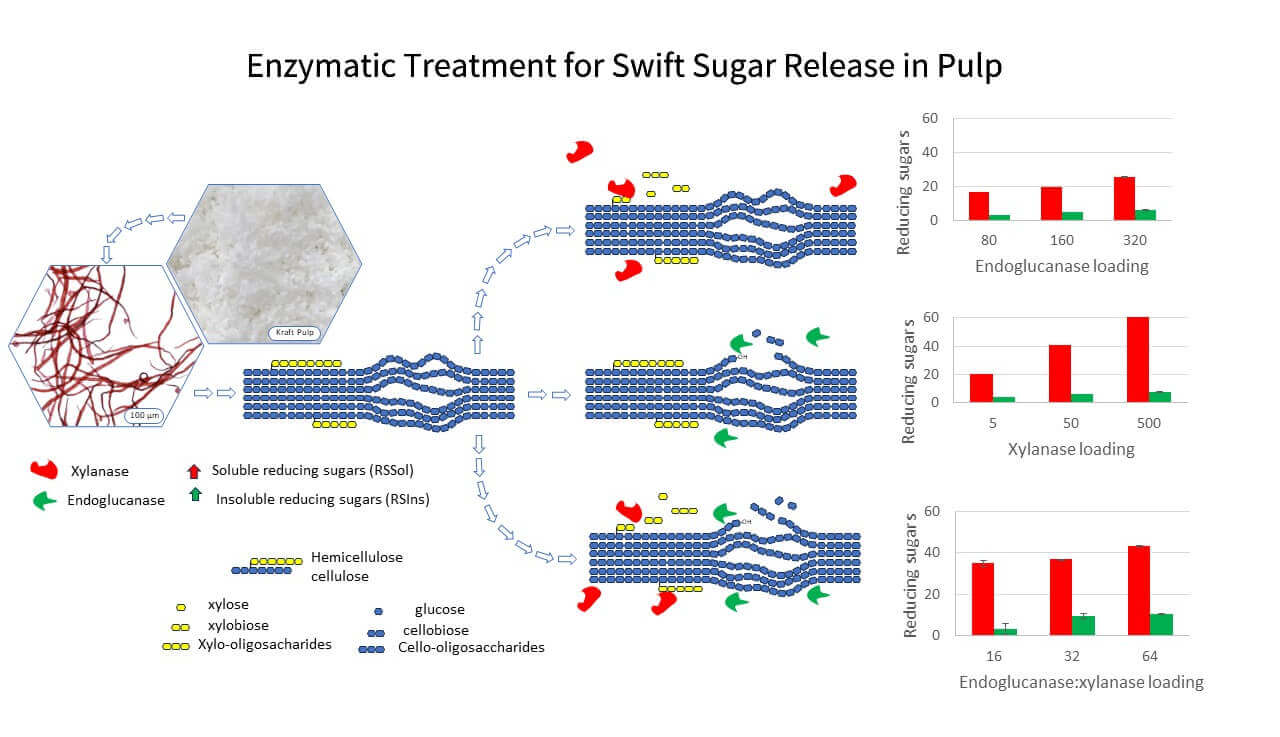 Open Access
Open Access
ARTICLE
A Rapid Parameter of Enzyme-Treated Cellulosic Material Revealed by Reducing Sugar Release
Departamento de Biotecnologia, Escola de Engenharia de Lorena, Universidade de São Paulo, Lorena, SP, 12602-810, Brazil
* Corresponding Author: Adriane Maria Ferreira Milagres. Email:
(This article belongs to the Special Issue: Renewable Materials and Advanced Technologies for Sustainability)
Journal of Renewable Materials 2024, 12(3), 539-551. https://doi.org/10.32604/jrm.2023.045726
Received 06 September 2023; Accepted 12 December 2023; Issue published 11 April 2024
Abstract
This study was conducted to evaluate the effectiveness of enzymes in purifying and reducing the degree of polymerization of cellulose for the production of dissolving pulp. Our goal was to determine the contributions of xylanase (X) and endoglucanase (EG) in the treatment of pulp, specifically by quantifying the formation of soluble and insoluble reducing sugars using the dinitrosalycilic acid (DNS) test. Predominantly, the release of soluble reducing sugars (RSSol) was enhanced after xylanase treatment, while endoglucanase (EG) treatment led to changes in insoluble reducing sugars (RSIns). The maximum synergism was observed for RSIns when a high ratio of endoglucanase to xylanase (320EG:5X/g pulp) was used. The relative contribution of endoglucanase to RSins was determined to be 15.6% of the total reducing sugar. The viscosity of pulps treated with xylanase decreased only by 7%, whereas endoglucanase treatment significantly reduced viscosity by 45%. Modifications in the particle size were observed after pulp treatment with the combination of endoglucanase and xylanase. In summary, the DNS test is a rapid and effective method for evaluating the efficiency of enzyme treatments on pulps. The measurement of RSIns correlates with changes in pulp viscosity to different extents, providing valuable insights into the effectiveness of enzyme treatments.Graphic Abstract

Keywords
Cite This Article
 Copyright © 2024 The Author(s). Published by Tech Science Press.
Copyright © 2024 The Author(s). Published by Tech Science Press.This work is licensed under a Creative Commons Attribution 4.0 International License , which permits unrestricted use, distribution, and reproduction in any medium, provided the original work is properly cited.


 Submit a Paper
Submit a Paper Propose a Special lssue
Propose a Special lssue View Full Text
View Full Text Download PDF
Download PDF Downloads
Downloads
 Citation Tools
Citation Tools